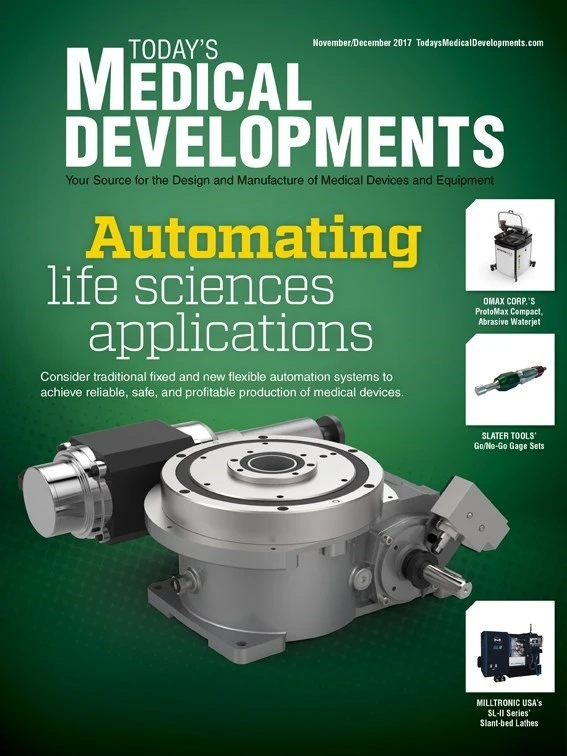Today’s medical device manufacturers face a range of evolving requirements and regulations, including labeling, so manufacturers must consider a centralized approach that allows them to integrate labeling processes with existing enterprise resource planning, product lifecycle management, or other validation. The ability to drive data from sources such as SAP or Oracle offers greater accuracy and control. Leveraging a central data store lets companies avoid the need to replicate data or manage a separate database, minimizes overhead, reduces errors, and offers improved labeling consistency, driving greater supply chain efficiency.
Managing UDI

Labeling plays a crucial role in meeting evolving standards, especially the U.S. Food and Drug Administrations’ (FDA) unique device identification (UDI) requirement, where labeling and identifying parts and packages is critical for patient safety. The silver lining to the UDI rules is a product label carries important information through the supply chain:
- How the product was made
- What it contains
- How it should be handled
- How it should be disposed
One of the best ways to achieve a sustainable, extendable UDI program is to implement an enterprise labeling solution, one that integrates production labeling and business processes. This approach allows businesses to react to evolving customers, and regional and regulatory requirements while also ensuring consistency across a global supply chain. In turn, companies can meet performance and scalability requirements with the flexibility to sustain complex, high-volume labeling requirements.
In addition to UDI compliance, the FDA’s Title 21 of the Code of Federal Regulations (CFR) Part 11, provides guidance for electronic records and eSignatures to streamline workflows. The enterprise labeling solution supports workflow and eSignature capabilities to give a new level of visibility and control.
Helping reduce costs
In a recent survey conducted with 200 manufacturing professionals, 47% indicated they were experiencing costly downtime due to labeling disruptions. Reasons cited for delays include:
- Handling customer-specific labels
- Product-specific labels
- Slow label printing speeds
Labeling issues occurring across supply chain segments can cost hundreds of thousands of dollars in lost productivity. An enterprise-wide labeling solution, tightly integrated with existing systems, can unify the entire process. By gaining centralized visibility and control, users can adapt to changing requirements, errors are reduced because data comes from reliable sources, and customer-specific label changes are handled systematically with secure access to a library of updatable templates. One medical device manufacturer reduced 10,000 templates to 20.
Automation allows companies to achieve significant performance gains while labeling keeps pace with production. Medical device companies can initiate print jobs and produce labels anywhere in the world based on approved templates and common labeling infrastructure. Another manufacturer, after centralizing deployment of labeling, reduced the time to execute a job from several minutes to less than 6 seconds.
Constant change simplified
Companies relying on multiple, non-standardized labeling products can have disjointed, often redundant templates that slow production and delay shipments. Because changes are not always captured earlier in the process, there also will be risk of errors and inconsistencies.
A standardized, centralized labeling solution lets companies make changes at the data source, ensuring they are properly reflected on the appropriate labels. Change it once, apply it many times. And, providing access to the same labeling solution to multiple users at different locations gains full visibility and control across the value chain.
Supplier level efficiencies
Manufacturers handle third parties in multiple ways. Many still package and ship labels right to the partner or pay to have the labels printed for the third party by an outside vendor. These options can be extremely costly and cause delays and mistakes. The best way to handle this challenge is to integrate third parties into the enterprise labeling system.
Using either their existing partner portal or a secure system from a labeling provider, medical device manufacturers can allow suppliers to securely access and print labels locally – with the right information to the receiving organization, delivering globally consistent labeling. This solution can be set up in a secure environment so third parties only see information, labels, and printers pertinent to them.
Managing growth, expansion
The faster manufacturers can satisfy local regulatory, language, and shipping demands, the faster they can drive revenue. While there is value in pulling data from enterprise resource planning sources, a change like this may require programming that can take 4 to 6 weeks to complete.
To overcome delays, look for enterprise labeling with built-in business logic that can be dynamically updated without having to wait for changes to the enterprise application. Business rules can be configured and customized within a standard user interface to update specifications quickly and dynamically for language, branding, or regional compliance.
As companies grow and expand, they need a system that will meet their needs on a global and local level. They need a system with proper, certified integration with systems of record such as SAP and Oracle. They need an enterprise labeling solution that can meet their requirements to handle languages, regulatory standards, color printing, third party, and customer demands. And, they need the right support and service organization behind it to ensure long-term success.
Loftware Inc.
www.loftware.com
Get curated news on YOUR industry.
Enter your email to receive our newsletters.
Explore the November December 2017 Issue
Check out more from this issue and find your next story to read.
Latest from Today's Medical Developments
- Pioneering battery-free cardiac implants
- KBC Tools & Machinery marks its 60th anniversary, Founder’s Day
- Address the challenges of machining high-temperature aerospace components
- Elevate your manufacturing operations with April’s Manufacturing Lunch + Learn
- AdvaMed statement on tariff announcement
- Collets – Not all are created equal
- ENGEL expands production capacities in the Americas; new plant opened in Mexico
- MFI brings fast, high-polishing additive parts finishing to Rapid + TCT 2025







